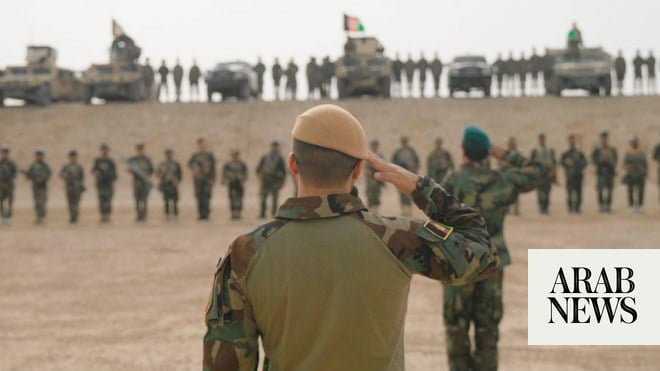
There were muted celebrations on Dec. 3 when news emerged from Doha that the Afghan government and the Taliban had at last agreed the terms of reference for their peace talks. This opened the doors for serious discussions between the two sides about crucial issues such as the nature of Afghanistan’s future government, human rights, the status of women and the rights of minorities in the country.
But the jubilation was overshadowed by Washington’s prior announcement that the US is accelerating the withdrawal of its troops from Afghanistan. Acting Defense Secretary Chris Miller said on Nov. 17 that 2,500 troops will return home by mid-January, leaving behind only a small contingent of about the same number.
This expedited withdrawal plan prompted rare criticism from Senate Majority Leader Mitch McConnell, who warned it “would hurt our allies.” Marco Rubio, the head of the Senate Intelligence Committee, described the withdrawal as “a Saigon-type situation,” drawing parallels with the ignominious retreat of US forces from Vietnam in the 1970s.
This view that the American withdrawal from Afghanistan, after a 19-year struggle to defeat the Taliban, is similar to the Vietnam debacle was reflected in the Congressional testimony of Ryan Crocker, the former US ambassador to Afghanistan. He described the US negotiations with the Taliban and the withdrawal agreement of Feb. 29 as being akin to the “white flag of surrender” that marked the start of US talks with North Vietnam in Paris.
What troubles many commentators is that President Donald Trump made the decision to withdraw the troops after his electoral defeat. In the process he has adopted a position that conflicts with the views of President-elect Joe Biden, who prioritizes the fight against terrorism and would possibly even seek to cripple the Taliban on the battlefield.
The principal concern among critics of the precipitate withdrawal relates to the unabated violence that has continued in Afghanistan since the agreement with the Taliban in February. Between July and September, nearly 900 people were killed and more than 1,500 injured, a 45 percent increase in the number of casualties compared with the previous three months. The violence included Taliban attacks on Afghan forces, sieges of enclaves in the south, targeted assassinations and extensive collateral damage to civilians.
Brookings commentator Michael O’Hanlon foresees a serious rise in Taliban violence following the US withdrawal and wonders whether this might lead to a de facto partition, with the Pashtuns dominating the south of the country and non-Pashtuns — the Tajiks and Uzbeks — controlling the north. Such a partition would inevitably involve the displacement of millions of people and perhaps even ethnic cleansing.
However, Pakistani commentator Maleeha Lodhi points out that during a donors’ conference for Afghanistan in Geneva on Nov. 23-24, the US, the EU and other nations pledged $12 billion over the next four years — but the donations are conditional on an enduring ceasefire and real progress in government-Taliban peace talks, including on human rights issues. She argues that economic leverage and not military force will guarantee peace in Afghanistan.
It is difficult to be optimistic, however. The issues that divide the government and the Taliban are fundamental to the latter’s identity. In an interview in Doha at the end of November, Taliban spokesman Mohammed Naeem Wardak made this abundantly clear when he dismissed the idea of a ceasefire until the causes of the war are discussed.
Between July and September, nearly 900 people were killed and more than 1,500 injured, a 45 percent increase in the number of casualties compared with the previous three months.
Talmiz Ahmad
He also said the Taliban agreement is with the US government, not Trump, and that if the Biden administration reneges on it “our war against the United States will resume and will continue until they leave.” He added that the fight against foreign occupation is legitimate, and said the Taliban will grant women “their rights under Islamic law, but only when the Islamic system is established.”
There is one other issue that merits attention: The competing interests of Pakistan and India in Afghanistan, which will come into play after the US withdrawal. Pakistan would like to see a political settlement that benefits the Pashtun community, and an inclusive government that is not hostile to Pakistani interests. This would require a major Taliban presence in the new order, which would also confine India to an economic development role.
India would accept an inclusive government in Kabul, but only if the Taliban gives up its traditional links with Al-Qaeda and its affiliation with extremist ideology. With the Haqqani network controlling the Taliban’s fighting forces, this appears unlikely.
The only way forward is for India and Pakistan to make a fresh start. In December 2018, Pakistan’s Foreign Minister Shah Mahmoud Qureishi said in the National Assembly that peace in Afghanistan was the “shared responsibility” of all nations in the region. He noted that India has “stakes” in Afghanistan and “its cooperation will also be needed.” In November this year, Prime Minister Imran Khan praised Qureishi’s remarks and pointed out that “peace in Afghanistan guarantees peace in the region.”
This would be an excellent basis for India and Pakistan to work together for peace in Afghanistan.
Talmiz Ahmad is an author and former Indian ambassador to Saudi Arabia, Oman and the UAE. He holds the Ram Sathe Chair for International Studies, Symbiosis International University, Pune, India.
Disclaimer: Views expressed by writers in this section are their own and do not necessarily reflect Arab News" point-of-view












